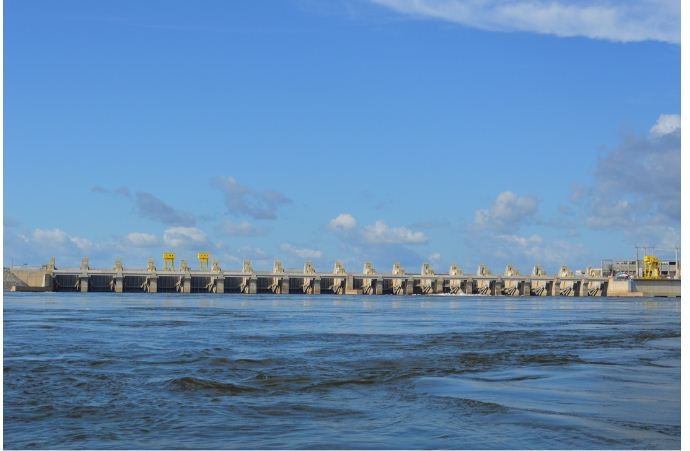Nov 7 2018
Much of the developed world was built with the help of a renewable source of electricity—hydropower from dams. However, five researchers from Michigan State University (MSU) state that behind the roaring cascades is a legacy of overestimated value and underestimated costs.
 Belo Monte Hydropower dam in the Brazilian Amazon (Credit: Laura Castro-Diaz)
Belo Monte Hydropower dam in the Brazilian Amazon (Credit: Laura Castro-Diaz)
The developing world can—and must—adapt better ways to produce hydropower for industry and livelihoods. The case is defined in “Sustainable hydropower in the 21st century” in the recent issue of Proceedings of the National Academy of Sciences.
“This article identifies that for hydropower to continue to make a contribution to sustainable energy it needs to consider from the outset the true costs, social, environmental and cultural that may be involved, and include those in the pricing of the infrastructure, including the eventual removal of the dam, rather than pass those on to the public in 30 years,” said Emilio Moran, John A. Hannah Distinguished Professor of Geography, Environment and Spatial Sciences.
“The benefits of energy from dams no longer outweigh the social and environmental costs that damming up rivers brings about.”
Dams were popular in Europe and North America between 1920 and1970. Yet these days, more dams are being removed in Europe and North America than are being constructed.
It turns out that dams had a negative side. They disturb the natural ecology of rivers, release large amounts of greenhouse gases, damage forests and biodiversity, as well as displace numerous people while disrupting food systems, agriculture, and water quality.
Furthermore, the power produced often does not go to the places bearing the ecological burdens.
The MSU team—geographers, hydrologists, social scientists, and engineers—analyzed how the needs of a changing world can be better catered to than building more dams across rivers. Nevertheless, they note that an estimated 3,700 dams that generate over one megawatt are either planned or under construction mainly in developing countries.
The risk: a mass destruction of the natural world, one probably worsened by looming climate change.
“The human costs of large dams are no less important,” the paper notes. “The social, behavioral, cultural, economic, and political disruption that populations near dams face are routinely underestimated.”
Also, dams usually have a finite lifespan—typically about 30 years, thereby failing as a long-term sustainable plan.
The team mentions that it is not that the rivers are not a beneficial source of power. The potential is there to be harnessed in less intrusive technologies. Innovative technologies that do not require damming a river or resettling populations stand to alter the hydropower sector. The technologies, they say, would have to be accompanied by environmental as well as stringent social impact assessments—meaning damning assessments that could halt a dam.
One possibility is instream turbine technology, a less intrusive method to harness hydropower without the major disturbances of dams.
Our team is working on alternatives to hydropower generation, such as in-stream turbines that do not involve damming up the river, but produce energy for local communities, maintain a healthy river ecology, and does not involve resettlement and other social costs. Our goal is no less than transforming the hydropower sector.
Emilio Moran, John A. Hannah Distinguished Professor of Geography, Environment and Spatial Sciences.
The paper was authored by Moran, Maria Claudia Lopez of community sustainability, Nathan Moore of geography/climate change, Norbert Müller of engineering/turbomachinery, and David Hyndman of hydrology. Moran also is a member of MSU’s Center for Systems Integration and Sustainability.
The paper is part of the special series Inaugural Articles by members of the National Academy of Sciences, in this case, Moran, elected in 2010.
The research was supported by the National Science Foundation and Brazil’s Fundacao de Amparo a Pesquisa do Estado de Sao Paulo.